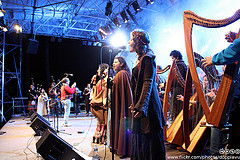The Celtic cross is a powerful symbol representing the connection between heaven and earth. The Celts believed in the power of fire, earth, air, and water, and their craftsmen immortalized this symbol in precious metals, which were used for adornment and as a constant reminder of its power.
Celtic Art Dragons were considered essential in Celtic folklore and played a significant role in Celtic art. The Celts lived in harmony with nature, particularly the land, and believed that dragons could influence the land because they were connected to it. If a dragon frequented a specific area, that place was said to possess magical powers.
Dragons were also closely associated with water, and Celtic dragons often took the form of sea serpents with wings but no legs. Celtic dragon art often depicts dragons with their tails in their mouths, forming the ‘circle of life’, symbolizing eternal existence. Dragons were used as a symbol of power, as seen in the dragon depicted on the Welsh national flag and in Celtic myths, where the name Uther Pendragon was given to Arthur’s father.
Ancient Celts Dragons do not appear in Ancient Celtic art and were likely introduced to the Celts by wandering Vikings. The word “dragon” is derived from the Greek word for “to see clearly.” The Celts believed that dragons had gifts of vision, wisdom, and prophecy and that they were guardians of all knowledge.
Dragons, Celts, and Druids The ancient Druids believed that the earth was like the body of a dragon and built their sacred stone circles on the nodes of this body, believing these areas to be powerful. They also believed that dragons had the power to connect us to the earth’s magnetism and natural healing waters from underground springs.
Celtic dragons were highly revered because they were believed to bring together Earthly and Heavenly forces and, as guardians of the world and all living things, dragons are the most powerful of all Celtic symbols.
The Ley of the Land This belief by the ancient druids held that the earth was like a dragon’s body, with rolling hills and flowing rivers. It described how cosmic forces flowed through and affected certain regions. The path a dragon took was called a vein, and this was crucial to the flow of energy in the ley of the land. If a dragon frequently crossed a place or rested there, that area became a region of increased power, such as Stonehenge.
Some believe that the Celtic cross, encircled by a circle, symbolizes the crossing ley lines and that the circle of life should be focused on this energy. Without Celtic dragons, there would be no ley of the land and no representation of it on the Celtic cross.
The role dragons played in the lives of the Celts changed when Christianity was introduced, and it was used to their advantage. The great spiritual powers of the dragon were deemed evil and were said to have become Satan. According to legend, the dragon was slain by St. George to save a maiden, who represented Christianity.
Some might argue that the depiction of a dragon alongside a cross is satanic, but considering the deep respect the Celts had for dragons and the role they played, this is not the case. In fact, the dragon was such a spiritual creature that the only way the Celts could represent it was to associate it with their highest symbol of spirituality: the Celtic Cross.
The role dragons played in Celtic folklore highlights the importance of this symbol in Celtic culture. The dragon, as a spiritual creature, was associated with the Celtic Cross, the ultimate symbol of Celtic spirituality.
Manuel Marino is a seasoned Senior Producer, Music Composer, and Artist with over a decade of experience. He specializes in branded entertainment across various mediums, including video games, films, and advertising campaigns. With 20+ years as a game music composer, Manuel has worked on numerous platforms, creating diverse orchestral soundtracks. HIRE ME


 Manuel is a passionate, driven, and techsavvy AV technician,
Manuel is a passionate, driven, and techsavvy AV technician, 
